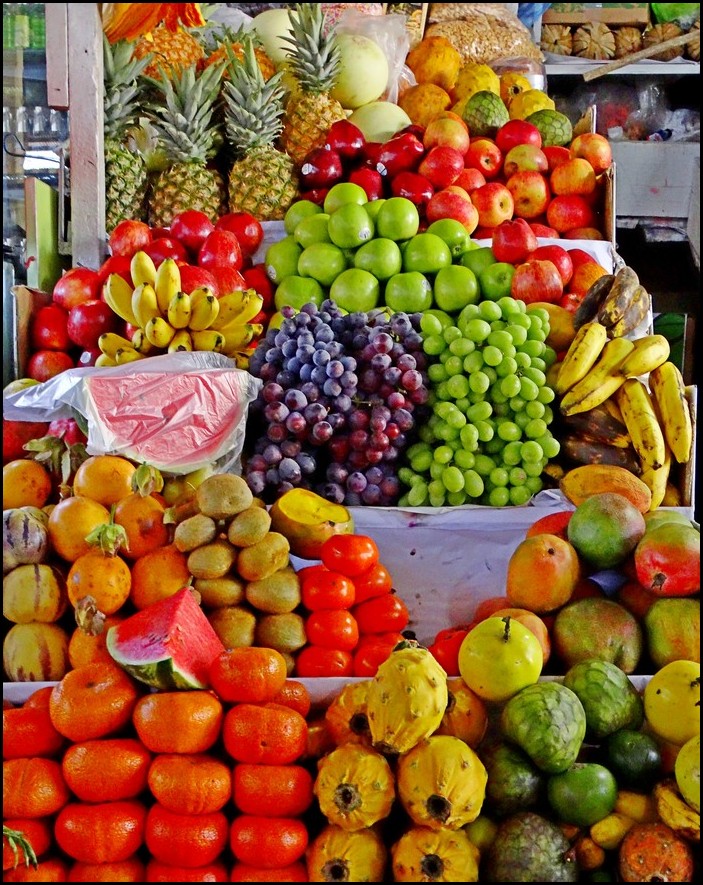
6 Delicious Fruits of South America
Ever since I was a young girl I’ve always lovvvveeeedddd fruits. I love almost every fruit I’ve ever eaten. In fact, I only know of tw fruits I dislike: figs and cumquats.
So naturally while I’m out traveling the world, I’m quick to try any new fruit I come across. In SouthEast Asia I got hooked on several delicious tropical fruits. In Australia I came across a couple very surprising fruits, one that tasted like sweet lemon custard, another that supposedly tastes like chocolate.
Here in South America I’ve been surprised to find a huge plethora of fruits, even up int the high Andes mountains. I think a major reason for the diversity is the proximity to the tropical Amazon, as well as various fruits imported from neighboring countries, such as kiwis grown in Chile.
Fruits here in the Andes include all the usuals, such as apples, bananas, watermelons, mandarin oranges, lemons and limes. There are also plenty of fresh strawberries and blueberries.
Many common tropical fruits are plentiful here, too, such as mangos, papayas and pineapples.
In addition to all these well-known fruits, there are also many delicious fruits that are little-known to Americans & Europeans, including some that I’ve found for the first time. Others I’ve eaten in Mexico or Central America. A couple I know, surprsingly, from Southeast Asia.
Following are six delicious, little-known fruits I’ve been enjoying on a regular basis here in South America.

Tuna – Cactus Fruit
This small firm juicy fruit is the fruit of a cactus. If you’re familiar with cactii, you’ve quite likely seen these oval-shaped fruits growing on the sides of the cactus stalk. They are bright red to deep purple in color.
In Spanish, this fruit is called ‘tuna’. So if you ever hear Spanish speakers talking about ‘tuna’, they don’t mean those big ocean fish. Lol.
I first encountered ‘tuna’ fruit in Mexico, where it’s very common and popular. More recently, I was delighted to find tunas, sold in most produce markets and fruit shops all over South America. I eat them regularly for breakfast.
As you can see, tunas have a tough, thick skin and bright beet-red, juicy fruit. The flesh is riddled with tiny seeds, which you eat right along with the fruit. Tunas are very sweet and nearly as watery as watermelon.
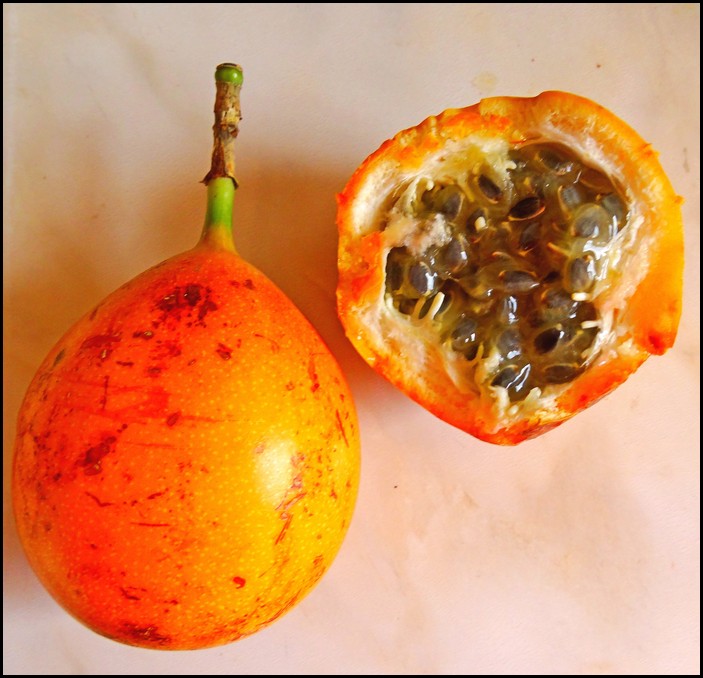
Granadilla – Passionfruit
I first encountered passionfruit in New Zealand and immediately loved it. So I was very pleasantly surprised to find them sold all over South America.
In South America, there are actually two fruits that translate into English as ‘passionfruit’. Granadillas are pretty much the same sweet passionfruits that I learned to love in New Zealand.
The other ‘passionfruit’ in South America is called Maracuya. It’s slightly bigger than granadillas and yellow-skinned. The inner fruit looks the same, but is very sour. Usually maracuya is used to make fresh juice, adding lots of sugar to sweeten it up.
Both granadilla and maracuya have a thin, crispy outer skin that cracks easily, like egg shells. The inner skin is soft, white and pulpy.
The edible fruit is almost gel-like and packed with soft black slightly-crunchy seeds, which are eaten along with the fruit, just like for cactus fruit.
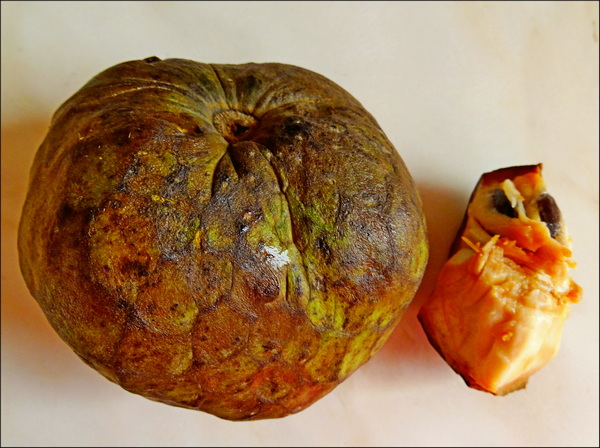
Chirimoya – Custard Apple
Here’s another fruit that I know from elsewhere in the world. Custard apples are one of my favorite fruits in Southeast Asia, particularly in Thailand.
In Latin America, this fruit is called ‘chirimoya’. It’s about the size of a large fist, with thin pale green skin. The inner fruit is generally white and creamy with hard black seeds that you don’t eat. The white custardy flesh is super sweet.
The Southeast Asia variety has a slightly different skin, which is thicker and breaks easily into segments, making it quite easy to peel with the hands.
Chirimoya must be a cousin fruit to the Southeast Asian variety. The skin is paper-thin and I find I need to cut with a knife. But otherwise chirimoya tastes almost identical to ‘noi na’ custard apples in Thailand.

Piticaya – Yellow Dragonfruit
Nowadays, it’s pretty easy to find dragonfruit in big supermarkets in many places around the world. Usually in the USA, dragonfruits have bright pink skin and either white or pinky-purple flesh.
Here in South America, piticaya have the same size, shape and skin texture as their pink-skinned cousins. But piticaya’s fleshy skin is bright yellow.
Inside, the flesh looks the same as other dragonfruits – milky-white fruit speckled with tiny black seeds, which are eaten with the fruit.
To be honest, I was never a big fan of eating dragonfruit until I found piticaya. I always thought the bright pink dragonfruits looked very dramatic and beautiful, but they lacked any flavor.
Piticaya, on the other hand, has a sweet perfumy flavor. So finally I’m a fan of dragonfruit, at least the South American variety.

Lucuma
Here’s a fruit I’ve found only in South America. I could not find an English translation for it, though.
This rather unattractive, fist-size fruit has a really unusual flavor and texture, especially for a fruit. The bright yellow flesh has a smooth, dry-ish texture, quite similar to cooked sweet potatoes.
The flavor is nutty and caramely! Some English-speaking Peruanos refer to lucuma as ‘peanut butter fruit’. It wouldn’t go so far as to call it peanut butter in flavor, but it definitely tastes like some sort of creamy nut. Delicious!
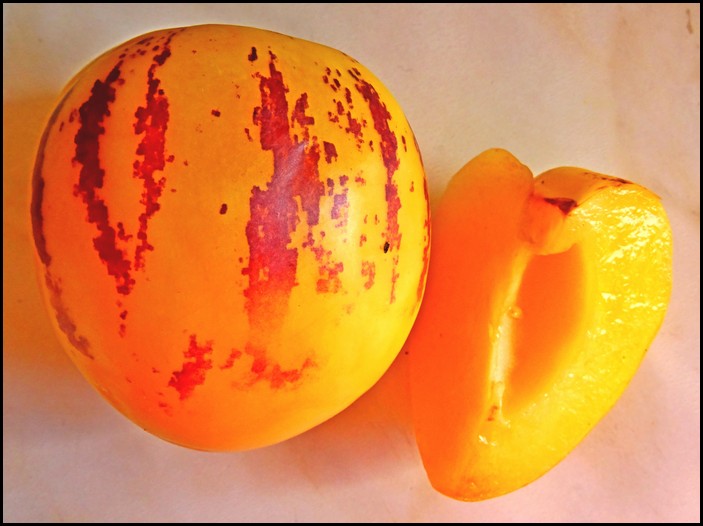
Pepino Dulce
Pepino Dulce translates into English as ‘sweet cucumber’.
However, I don’t quite understand why locals refer to this melon-like fruit as a cucumber. To me, it doesn’t have any cucumber characteristics: not the shape, color, texture, smell nor taste of cucumber.
Instead, this tasty fruit is like a miniature melon, about the size of a large fist. It has a paper-thin yellow skin with dark-purple patches or stripes and bright yellow flesh.
The flesh texture is the same as cantelope or honeydew. It tastes most similar to honeydew, but has its own distinct flavor.
Summary
In this article, I’ve presented six of my favorite, lesser-known South American fruits, ones that I eat daily. There are more tasty fruits here, some of which I eat occassionally and others I haven’t tried yet. I hope to enjoy new ones soon!
If you’re traveling to South America, be sure to visit some fresh produce markets or fruit stores and try these delicious local fruits.
===============================
In the meantime, you might also enjoy:
All about Paracas National Reserve – Peru
==============================










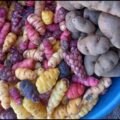

 Hi! I'm Lash, an American nomadic world traveler who's been traveling solo since 1998. I’m passionate about traveling the world nomadically and then sharing it all with you. I hope to inspire you to travel the world, to entertain you with tales from the road, and to help you reach your travel dreams. Welcome!
Hi! I'm Lash, an American nomadic world traveler who's been traveling solo since 1998. I’m passionate about traveling the world nomadically and then sharing it all with you. I hope to inspire you to travel the world, to entertain you with tales from the road, and to help you reach your travel dreams. Welcome! 




3 pings
Surviving the Cold Unheated Guesthouses and Hotels of South America - LashWorldTour
2022/09/13 at 10:36 pm (UTC 8) Link to this comment
[…] Introduction to the Spectacular Sacred Valley of PeruSix Delicious Fruits of South America […]
13 Things I Love about South America - LashWorldTour
2022/09/23 at 11:43 pm (UTC 8) Link to this comment
[…] I wrote about my favorite Unusual South American Fruits here. […]
15 Interesting Facts about Llamas and Alpacas - LashWorldTour
2022/09/30 at 6:50 am (UTC 8) Link to this comment
[…] Delicious Fruits of South America […]